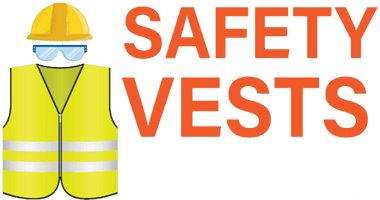
What is NFPA 2112?
The National Fire Protection Association's standard for flame-resistant apparel designed to protect industrial workers from flash fires is NFPA 2112 Compliance. The most recent edition of the flame resistant clothing standard, published in 2023, protects industrial personnel from short-duration thermal exposures from fire. These requirements are critical for manufacturers and certifying agencies to meet.
This standard states that performance testing is required to determine the flame resistance of safety clothing materials. Construction, welding, mechanics, industrial workers, and automotive workers wear these NFPA 2112 clothes. In addition to protecting against severe and rapid fire flame hazards from chemical or fuel ignition, it also prevents unintentional injuries.
NFPA 2112 standards for Coveralls
There are specific requirements for coveralls as per NFPA 2112 standards. Coveralls should be designed to protect the construction and industrial workforce from fire flashes or exposures. Safety clothing must also possess the ability to resist melting, dripping, and after-flame burning, achieving a predicted body burn of 50% or less in the event of a 3-second flash fire.
Key Points About NFPA 2112
1. The objective
- To reduce injuries and fatalities caused by flash fires in industries such as oil, gas, and petrochemicals, where such hazards exist.
2. Certification
- Garments and fabrics that meet NFPA 2112 undergo rigorous testing, including flame resistance, heat resistance, and thermal shrinkage resistance.
- Certified products must also pass durability testing to ensure the protection remains effective after repeated laundering and use.
3. Performance requirements include:
- The garment must not allow more than 50% total body burn during a flash fire exposure of 3 seconds, as determined by testing on a thermal manikin.
- Materials must meet standards for flame resistance, not melting or drip during exposure.
4. Methods of Testing:
- Heat and thermal shrinkage testing.
- Flash fire simulation using ASTM F1930 standards (a Manikin test in a controlled flash fire environment).
5. Applications:
- Commonly used in industries where workers face potential flash fire risks, such as oil refineries, chemical plants, and fuel transportation.
6. Complementary Standards:
- NFPA 2113 provides guidelines for the proper selection, use, care, and maintenance of flame-resistant garments certified to NFPA 2112.
By adhering to NFPA 2112, employers ensure compliance with workplace safety regulations and provide their employees with appropriate protective gear for hazardous environments.
For reference, here is a link to the National Fire Protection Association's NFPA 2112 pdf document.
NFPA 2112 FAQs
What is the meaning of CAT 2 2112?
CAT 2 and NFPA 2112 are the standards for resistant clothing that protect workers from fire flames and flash fire exposure.
Is NFPA 2112 good for welding?
NFPA 2112 standards govern FR clothing, which is designed to shield welders from possible fire and arc flash hazards at work. These are used by workers in the mining, utility, and oil and gas industries.
What is the difference between NFPA 2112 and NFPA 70E?
In particular, FPA 2112 refers to clothing layered or protected against flash fire hazards, while NFPA 70E refers to clothing made to avoid thermal risks or accidents.
What is the difference between EN ISO 11612 and NFPA 2112?
EN 11612 and NFPA 2112 are considered for safety in high-risk environments. EN ISO 11612 is an international standard approved by the US that states the performance requirements for protective clothing to worn against heat, flame, metal splashes, radiants, and more.
The difference between NFPA 2112 and EN ISO 11612 is that NFPA 2112 is specific to fire flames and flash resistance whereas EN ISO 11612 covers standards for safety clothing for multiple protections.
